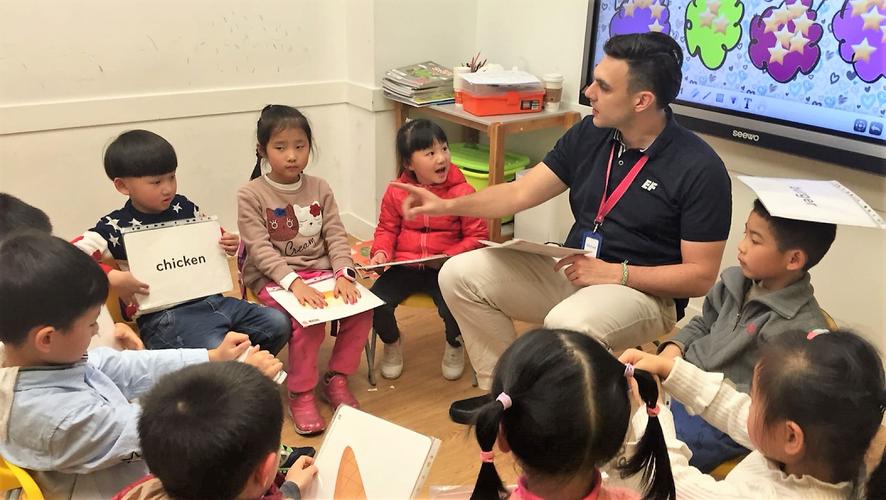In the realm of early childhood education, teaching English to nonnative speakers, particularly to children, requires a specialized approach that combines language learning methodologies with ageappropriate teaching techniques. Let's explore some effective strategies for teaching English to foreign children in early education settings:

Creating an immersive Englishspeaking environment is paramount. Surround children with English through songs, stories, games, and everyday interactions. Label objects in the classroom with their English names and encourage communication in English during activities.
Utilize playbased learning activities to engage children in language acquisition naturally. Incorporate English into games, roleplays, and pretend scenarios. Through play, children are more receptive to new vocabulary and sentence structures.
Engage multiple senses in the learning process. Use visual aids, such as flashcards and pictures, along with auditory stimuli like songs and chants. Incorporate tactile activities such as tracing letters or forming words with clay to reinforce learning.
Storytelling and reading aloud play a crucial role in language development. Choose ageappropriate English books with colorful illustrations and captivating stories. Encourage children to participate by asking questions, predicting outcomes, and retelling the story in their own words.
Repetition is key to language acquisition. Repeat new words and phrases frequently in different contexts to reinforce understanding. Use games like memory matching or "Simon Says" to practice vocabulary and sentence structures in a fun and interactive way.
Integrate aspects of Englishspeaking cultures into the curriculum to provide context and motivation for language learning. Celebrate holidays, traditions, and festivals from Englishspeaking countries through themed activities, crafts, and food.
Encourage and praise children's efforts in learning English. Positive reinforcement enhances motivation and confidence, leading to greater language proficiency over time. Use stickers, praise, and small rewards to acknowledge their progress and achievements.
Recognize that each child learns at their own pace and has unique strengths and challenges. Provide individualized support and adapt teaching strategies to meet each child's needs. Offer additional assistance to those struggling with language comprehension or expression.
Engage parents in their child's English language learning journey. Provide resources, such as bilingual books and languagelearning apps, for families to use at home. Encourage parents to reinforce English language skills through daily activities and conversations.
Continuous professional development is essential for early childhood educators teaching English to nonnative speakers. Stay updated on best practices, attend workshops and training sessions, and collaborate with colleagues to share ideas and resources.
In conclusion, teaching English to foreign children in early childhood education settings requires a holistic approach that combines linguistic principles with childcentered teaching methodologies. By creating an immersive, engaging, and supportive learning environment, educators can foster English language proficiency while nurturing children's overall development.
版权声明:本文为 “心一设计网” 原创文章,转载请附上原文出处链接及本声明;

